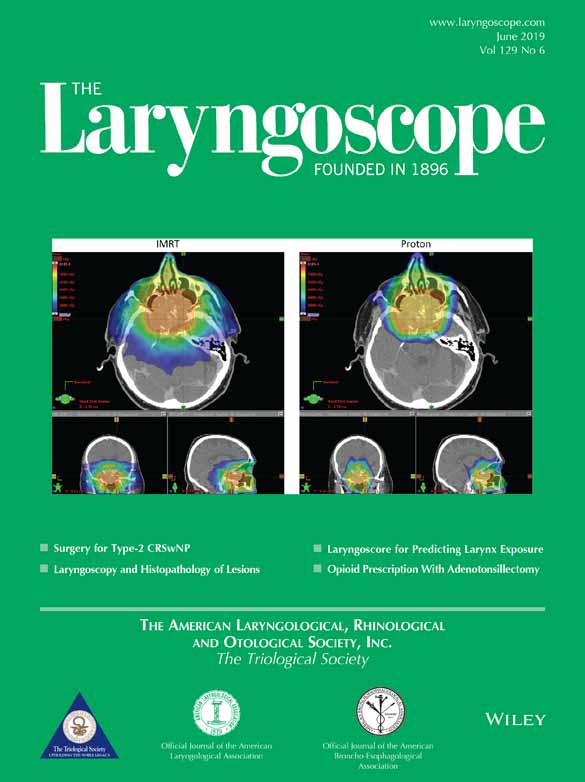Quality of life after extended versus transsellar endoscopic skull base surgery from 767 patients
The authors have no funding, financial relationships, or conflicts of interest to disclose.
Abstract
Objectives/Hypothesis
The aim of this study was to compare sinonasal-related quality of life (QOL) in patients treated by extended or transsellar endoscopic skull base surgery.
Study Design
Prospective data analysis.
Methods
Prospectively collected data from patients who underwent endoscopic skull base surgery between 2012 and 2017 were analyzed. Primary outcomes were preoperative Sino-Nasal Outcome Test-20 (SNOT-20) scores and then 1-month, 3-month, and 6-month follow-up. Comparative analysis was performed between the endoscopic transsellar approach (ETA) group (n = 647) and an extended endoscopic endonasal approach (EEEA) group (n = 120). In ETA group, the SNOT-20 score was compared between patients with a nasoseptal flap (NSF) (ETA-NSF) and without an NSF (ETA-no NSF).
Results
The mean total SNOT-20 score was significantly worse in the EEEA than ETA group at 1, 3, and 6 months postoperatively (P < .05). Although there was no significant difference in total SNOT-20 score between the ETA-NSF and ETA-no NSF group at 3 and 6 months after surgery, the percentage of patients with significant change (≥0.8) in the SNOT-20 score was higher in the NSF used group at 1, 3, and 6 months postoperatively (22.92% vs. 13.51%, P = .029; 20.59% vs. 5.59%, P = .039; and 24.00% vs. 4.03%, P = .003, respectively). According to multivariate analysis conducted regarding factors that deteriorate sinonasal QOL at 6 months following surgery, only NSF usage is significantly associated with poor outcome (odds ratio: 4.371, P = .011)
Conclusions
Sinonasal-related QOL was significantly worse in patients treated by the EEEA versus ETA. Use of an NSF is the only poor prognostic factor in sinonasal QOL after endoscopic skull base surgery.
Level of Evidence
2b
Laryngoscope, 129:1318–1324, 2019




